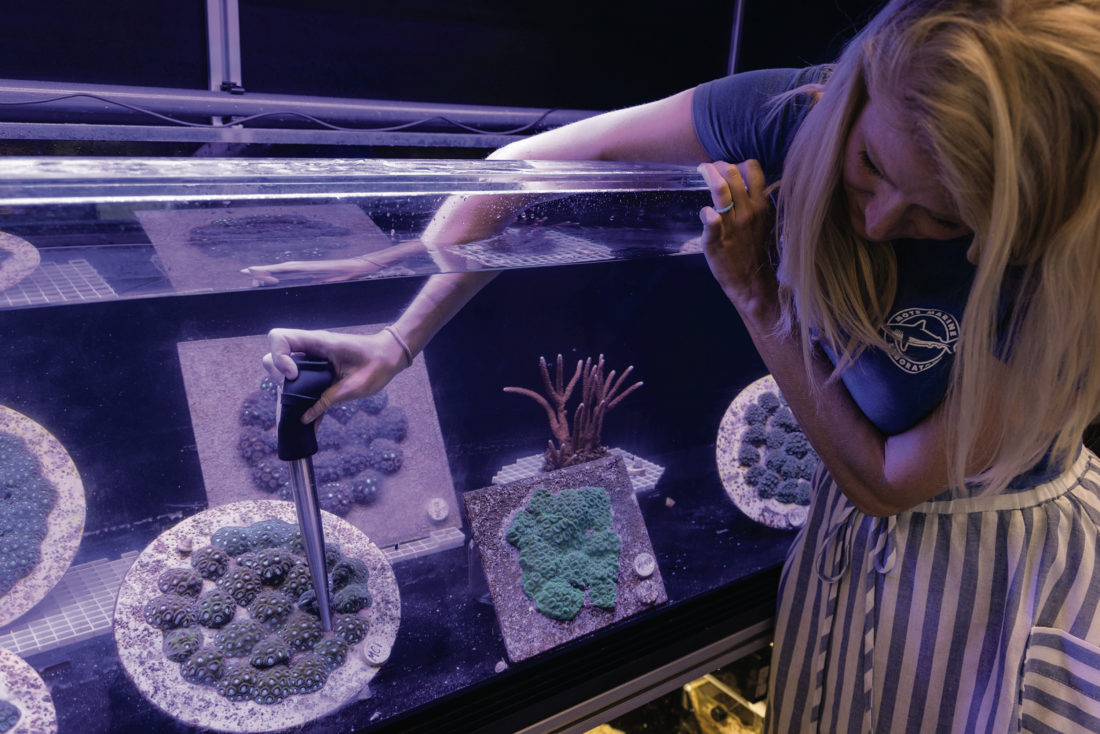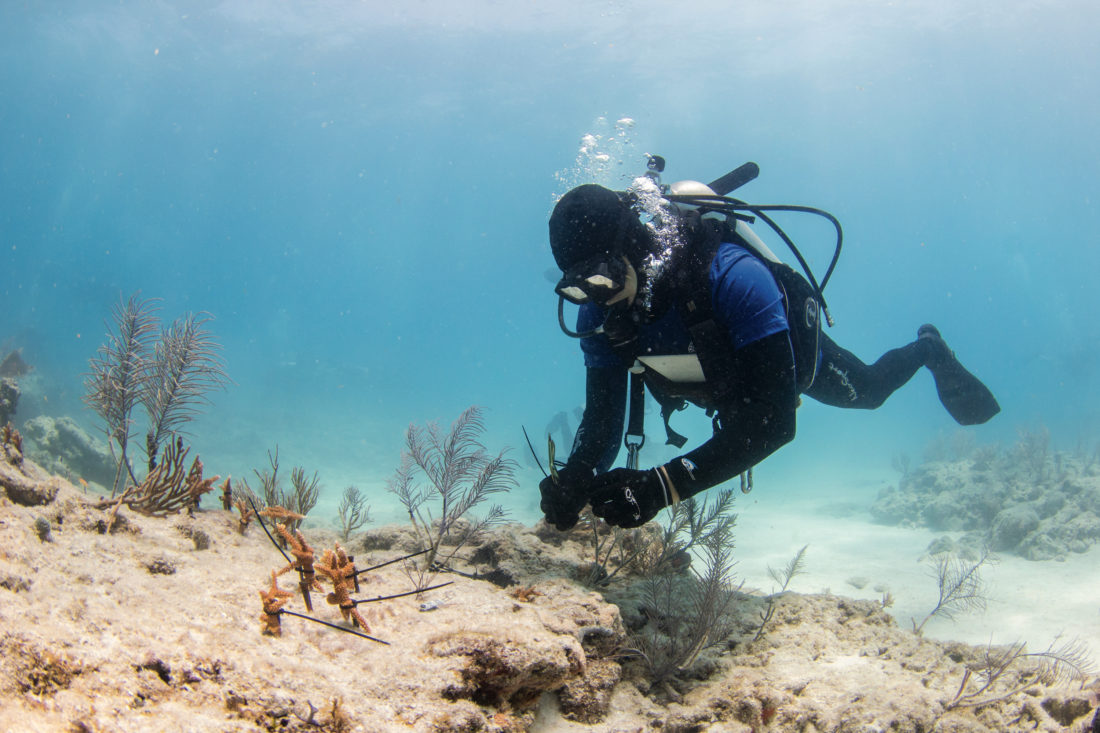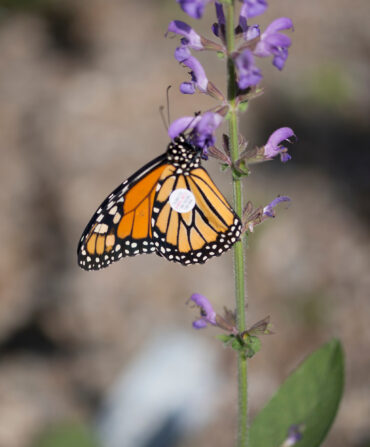On a few nights each August, just days after the full moon, Hanna Koch will be keeping watch at the Mote Marine Laboratory’s outpost on Florida’s Summerland Key, peering into tubs of water at the tentacle-ringed mouths of brilliant green, yellow, and purple corals. Close to midnight, staghorn, elkhorn, brain, and star corals will release tens of thousands of tiny glowing orbs into the water, and Koch will have her only chances of the year to create new generations of the species.
Each orb, or gamete bundle, holds millions of sperm and multiple eggs. In the wild, the bundles would separate, find different partners, and combine to create larvae that would swim and ride currents to settle on reefs. Around the Keys, however, this annual synchronized event—evolved over millennia based on hyperspecific temperature and lunar cues—is falling prey to the ocean’s rising temperatures and acidity levels, and coral disease. In the past forty years, these factors have caused the populations of the seven main species that form the backbone of Florida’s reefs to plummet; nearly 90 percent of the live corals that once dominated the reefs have been lost, leaving some populations so small and sparse that the sperm and eggs simply can’t find one another. A changing climate may also disrupt the dialed-in cues that regulate their release time. The gametes live only a few hours; if they don’t find partners in that window, there will be no offspring that year, and therefore no new genetic diversity to provide the flexibility to adapt in the future.
That’s where Koch—nicknamed the “coral baby mama”—comes in. At the nonprofit Mote’s nineteen-thousand-square-foot, hurricane-safe Elizabeth Moore International Center for Coral Reef Research & Restoration, an army of interns collect sperm and eggs from parental corals, and then Koch pairs the specimens up to create new genetically unique individuals that can grow safely in the lab until the team can “outplant” them in the ocean. “I’m playing coral matchmaker, yes, but this isn’t anything that wouldn’t or shouldn’t be happening in the wild,” she explains. The data of her colleagues Erinn Muller and Courtney Klepac, who study which corals withstand which threats by simulating the conditions brought on by climate change, guide Koch’s efforts. “There’s little point to this time and investment if the coral we outplant just dies,” Klepac says. “We want to know: Who do we hedge our bets on?”

Worldwide, coral reefs house some two million marine species; a quarter of all marine life relies on them in some way. They serve as nursery grounds and refuges, break waves and protect coastlines from storms, all while providing an unmatched natural marvel. While a coral colony may look like a colorful plant, it’s actually an animal composed of up to hundreds of thousands of genetically identical transparent polyps, within which live photosynthesizing algae. These symbiotic partners provide the corals with food and their brilliant colors—the reason that, when heat stressed, corals bleach white as the algae leave the inhospitable environment.
After Koch’s new corals have grown to about an inch, Mote team members encourage them to reproduce asexually using a recently developed technique called microfragging, in which they cut the corals into teeny pieces and gently glue them onto ceramic mounts called plugs. There in the lab, the coral replicates and grows quickly—up to fifty times faster than it would in the ocean—until it covers the roughly quarter-sized circular plug. Then, diving scientists ferry the coral to a dead reef, drill holes in it, and install the plugs so the coral can then naturally “reskin,” or re-cover, the reef.

“We have ninety sites from Islamorada down to Key West,” says Muller, the program manager at the Summerland Key outpost (Mote’s headquarters are in Sarasota). “We are putting out about thirty-two thousand frags a year,” with a long-term aim to boost coverage to 20 percent at seven of the Keys’ most important reefs. And Koch, to date, has created ten thousand new coral genotypes (that is, new babies) spanning five species. “The ultimate goal is to get the restored populations to a sexually mature, self-sustaining state,” she says, “so they can carry on, on their own.”
That mission is especially urgent because many of Florida’s coral species have now gone functionally extinct; Mote and other labs are keeping them alive using a Noah’s ark of specimens culled from rescue missions in which divers took pieces of every coral colony from every wild Keys reef they could find. The generations Koch creates descend from that coral—the last ones standing, Klepac points out, after years of deadly conditions.
The resilience of that surviving coral, paired with the work of scientists like Koch and Klepac, offers a glimmer of hope at a time when the future of Florida’s reefs hangs by a thread. Klepac has found that one of the algae that live within coral tolerates heat, a boon in an era of global warming. Another Mote scientist is mobilizing the ability of native spider crabs to graze the thick algae that grow on dead reefs, clearing a path for coral larvae to settle. Mote has also built an additional nursery in Islamorada, with plans for another on Key Largo, to expand the lab’s capacity to speed-grow coral.
And every August, Koch will await the moment when those tiny orbs enter the water in the dead of night, bearing the most precious cargo: the potential to make new coral, and to rebuild the reefs for the spectacular array of life found among their many forms and colors.








